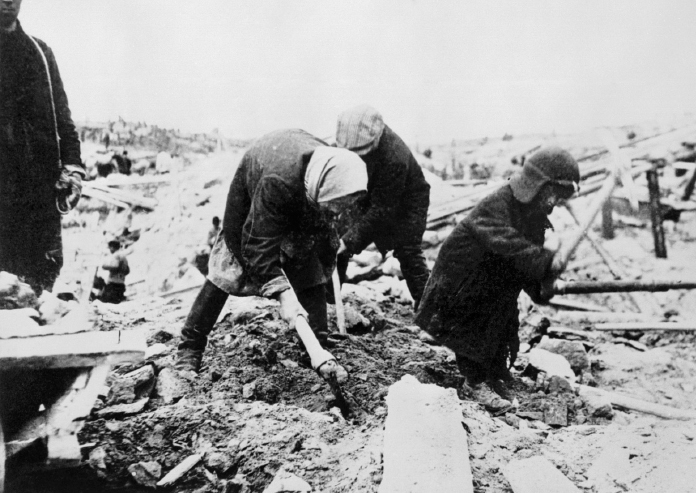Understanding World Societies:
Printed Page 928
Chapter Chronology
Stalinist Terror and the Great Purges
In the mid-1930s the push to build socialism and a new society culminated in ruthless police terror and a massive purging of the Communist Party. In late 1934 Stalin’s number-two man, Sergei Kirov, was mysteriously murdered. Although Stalin himself probably ordered Kirov’s murder, he used the incident to launch a reign of terror.
In August 1936 sixteen prominent “Old Bolsheviks” — party members before the 1917 revolution — confessed to all manner of plots against Stalin in spectacular public show trials in Moscow. Then in 1937 the secret police arrested a mass of lesser party officials and newer members, torturing them and extracting confessions for more show trials. In addition to the party faithful, union officials, managers, intellectuals, army officers, and countless ordinary citizens were struck down. In all, at least 8 million people were arrested, and millions of these were executed. Those not immediately executed were sent to gulags — labor camps from which few escaped. Many were simply worked to death as they provided convict labor for Stalin’s industrialization drive in areas of low population.

Women and Children Prisoners
Millions of Soviet citizens were sent to forced-labor prison camps from 1929 to 1953, and over 1.5 million died. Ten to 20 percent of these prisoners were women, many of them found guilty of nothing more than being married to men considered enemies of the state. This photo, taken around 1932, shows a woman and possibly her two children performing hard manual labor in one of these camps. (© akg-images/The Image Works)
Stalin’s mass purges remain baffling, for most historians believe those purged posed no threat and confessed to crimes they had not committed. Some historians have challenged the long-standing interpretation that blames the great purges on Stalin’s cruelty or madness. They argue that Stalin’s fears were exaggerated but genuine and were shared by many in the party and in the general population.4 Historians who have accessed recently opened Soviet archives, however, continue to hold that Stalin was intimately involved and personally directed the purges, abetted by amenable informers, judges, and executioners. In short, a ruthless and paranoid Stalin found large numbers of willing collaborators for crime as well as for achievement.
What were the economic and ideological goals of the Soviet five-year plans? To what extent were those goals achieved?
